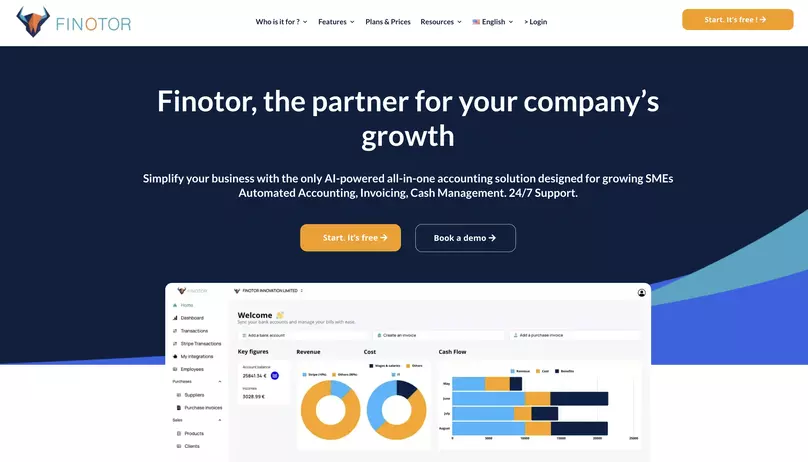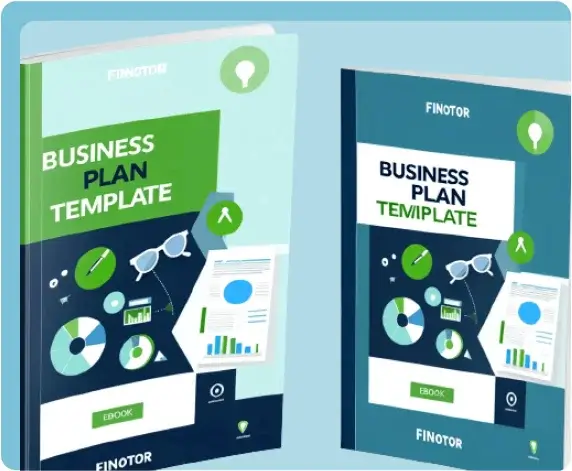Contents
Traditional growth strategies in ecommerce are not just failing; they’re practically archaic.
This article is a wake-up call for CEOs, CFOs, entrepreneurs, and freelancers who believe they are on top of their game. If you’re still using last year’s playbook for marketing, lead generation, and sales maximization, you’re in for a shock. Let’s delve into why the conventional methods you cherish might just be the ticking time bombs of your business demise.
In any case, what we’re going through is relentless and merciless. With each tick of the clock, new technologies and methodologies emerge that promise to revolutionize market trends and consumer interactions for ecommerce.
In this high-speed environment, relying on strategies that were effective a year ago is like piloting a ship with an outdated chart; things have changed, and what used to work can now lead you straight onto the rocks.
For businesses entrenched in traditional methods of operation, this reality poses a stark threat. Many of these companies have achieved success and stability by following a standard set of practices for years, making it even more challenging to accept that these tried and true methods are no longer as effective. This resistance to change can be particularly perilous in ecommerce—a sphere where consumer preferences and technological capabilities evolve at breakneck speed.
But what exactly has shifted? Today, consumers demand not only quality and value but also personalized experiences and instant gratification. They are more informed, more selective, and more influenced by dynamic digital ecosystems than ever before. This shift has rendered many old-school marketing tactics, sales approaches, and lead generation techniques ineffective. For instance, mass marketing blasts, once the staple of digital outreach, now yield diminishing returns as consumers grow weary of impersonal and generic advertising.
Moreover, the advent of data analytics and machine learning has transformed market analysis from a guessing game into a precise science. Businesses that fail to harness these tools find themselves at a significant disadvantage, unable to anticipate market trends or understand the intricate behaviors of their customers.
This introduction serves as both a warning and an opportunity. For those willing to listen, adapt, and innovate, the new digital offers untold potential to outmaneuver competitors and captivate customers. However, this requires a fundamental shift in thinking and operations—a daunting but necessary step toward securing your business’s future in the digital time.
As we explore the outdated strategies that could be undermining your business and introduce the innovative approaches that are defining the future of ecommerce, remember: the transformation of your practices is not just a strategy for growth, but a crucial defense against obsolescence.
> Try Finotor for free during 30 days
๏ No credit card is required ๏ Cancel anytime ๏ 24/7 online support.
Table of Contents
- The Changing Face of Ecommerce
- Marketing Strategies That No Longer Work
- Lead Generation: Quality Over Quantity
- Sales Strategies That Seal the Deal
- Harnessing the Power of Finotor for Financial Mastery
- Case Studies: From Failure to Success
- Conclusion: Embrace Change or Be Left Behind
The Changing Face of Ecommerce
The digital marketplace is evolving at an unprecedented pace. Innovations in AI, data analytics, and consumer behavior analytics are reshaping what it means to engage effectively with your target audience. If your business hasn’t pivoted to incorporate these cutting-edge technologies, you’re likely already lagging behind.
In today’s digital ecosystem, artificial intelligence (AI) is no longer just a buzzword but a fundamental component of successful ecommerce strategies. AI-powered tools are revolutionizing the way businesses interact with customers, process data, and optimize operations. From chatbots that provide 24/7 customer service to algorithms that predict purchasing behavior, AI is not just enhancing customer experience; it’s enabling brands to meet consumers at every touchpoint with unprecedented precision.
Data analytics, too, have moved beyond mere transactional tracking and into the realm of predictive analytics and big data. These tools allow businesses to understand vast arrays of customer data, providing insights that weren’t previously accessible. With these insights, businesses can craft highly targeted marketing campaigns, personalize their offerings, and increase conversion rates by appealing directly to individual consumer preferences and behaviors.
Moreover, consumer behavior analytics have taken center stage, offering an intricate view of customer journeys. These analytics help businesses track the paths consumers take, from initial awareness through various touchpoints to the final purchase. Understanding these pathways is crucial for optimizing the user experience and for determining where in the funnel prospective customers are lost. By analyzing behavior patterns, businesses can make data-driven decisions to streamline the user experience and significantly enhance conversion rates.
The integration of these technologies into ecommerce platforms has created a new paradigm where personalized shopping experiences are the norm, not the exception. Customers expect recommendations tailored to their preferences, communications that recognize their purchase history, and services that anticipate their needs. Businesses that fail to provide these tailored experiences risk not only losing customers to more adept competitors but also becoming irrelevant in an increasingly personalized marketplace.
For businesses used to more traditional ecommerce models, this shift can seem daunting. It requires not only an overhaul of technology but also a shift in mindset—from a product-centric view to a customer-centric one.
This transformation implies flexibility in business operations, investment in technological infrastructure, and constant adaptation to the rapid evolution of everything around us.
The stakes are high, but the rewards are higher. Businesses that successfully integrate AI, data analytics, and consumer behavior insights into their operations are poised to thrive. They stand out in a crowded market, forge stronger customer relationships, and drive growth through innovation. As we move forward, the question for ecommerce businesses isn’t whether to adapt to these changes but how quickly and effectively they can do so to remain competitive in this new digital reality.
Marketing Strategies That No Longer Work
With the full evolution of digital marketing, some practices have outlived their usefulness. As consumer behavior shifts towards more personalized and engaging experiences, some traditional tactics have become ineffective.
Let’s take a look at why these strategies are running out of steam, and what the consequences are for companies that continue to rely on them.
✅ Email Overload
The era of bombarding customers with daily emails is effectively over. This tactic, once a cornerstone of digital marketing strategies, now leads primarily to overwhelmed and disengaged consumers. With the average person receiving over a hundred emails a day, the likelihood of non-targeted, frequent emails being ignored—or worse, leading to unsubscribes—is higher than ever. Modern consumers expect relevance; they crave content that speaks directly to their needs and preferences. Companies that continue to send out mass, generic emails will not only see diminishing returns but may also damage their brand’s reputation and customer relationships. The focus must shift to quality over quantity, leveraging analytics to understand the best times to send emails and tailoring content to align with the specific interests of the recipient.
✅ Static Content
Static, unpersonalized content is another tactic that has lost its effectiveness. Today’s consumers encounter an enormous amount of digital content daily, making it crucial for businesses to stand out by offering personalized and dynamic content that engages and resonates on a personal level. Content personalization isn’t just about addressing a customer by their name; it involves understanding and responding to the customer’s behavior, preferences, and previous interactions with the brand. Static content fails to engage users in a meaningful way, often leading to quick exits and low conversion rates. Instead, businesses should leverage technologies like AI and data analytics to create adaptive content strategies that can change in real-time based on user interactions and preferences.
✅ Ignoring Social Proof
In today’s transparent digital time, social proof is more influential than ever. Consumers frequently check reviews, testimonials, and user-generated content before making purchasing decisions. Trust, which is central to customer relationships, is increasingly built upon this social proof.
Neglecting to incorporate or actively manage this aspect of your digital presence can severely harm your business’s credibility and authenticity. Businesses that do not showcase customer reviews, or worse, ignore negative feedback, risk losing trust and alienating potential customers. Engaging with reviews and encouraging customers to share their experiences can significantly enhance credibility and attract new customers. Leveraging social proof effectively involves not just displaying positive reviews but also responding to and learning from customer feedback.
In summary, businesses that cling to outdated marketing strategies like email overload, static content, and ignoring social proof are likely to find themselves at a competitive disadvantage. The shift towards more thoughtful, personalized, and engaging marketing practices is not just a trend but a fundamental change in how businesses must operate to captivate and retain today’s digital-savvy consumers.
Lead Generation: Quality Over Quantity
The age-old adage of “more is better” has long guided the lead generation strategies of countless businesses. However, in the context of today’s digital marketing, this principle is fast becoming obsolete. Gone are the days when a high volume of leads was the benchmark for successful marketing. Today, the focus must decisively shift towards generating high-quality leads that are more likely to convert into paying customers. This transformation involves a deep dive into sophisticated targeting, personalization strategies, and the leveraging of advanced analytics to understand and predict consumer behavior.
✅ The Shift to Targeted Lead Generation
In the past, broad-spectrum campaigns aimed at capturing as many leads as possible were commonplace. These campaigns often prioritized quantity, operating under the assumption that a larger number of leads would naturally result in more conversions. However, this method proved inefficient, with companies spending significant resources on leads that had low conversion potential. The new paradigm is precision targeting, which involves identifying and engaging specific segments of the market that are more likely to be interested in your products or services.
Advanced data analytics play a crucial role in this targeted approach. By analyzing customer data and market trends, businesses can identify patterns and preferences that help pinpoint potential high-value customers. Tools such as customer relationship management (CRM) systems and predictive analytics software are now essential, enabling marketers to segment their audiences more effectively and tailor their messages to meet the unique needs and interests of each segment.
✅ Personalization at the Core
The rise of digital technology has brought about an expectation of personalization among consumers. Today’s customers want interactions that are tailored to their needs, preferences, and past behaviors. This demand for personalization extends into every aspect of the marketing funnel, including lead generation. Personalizing communications and offerings not only enhances the user experience but also significantly increases the chances of conversion.
Utilizing technologies like AI and machine learning, businesses can now automate the personalization process to an unprecedented degree. These technologies can analyze customer data in real-time, allowing for the dynamic adjustment of marketing messages and campaigns based on ongoing customer interactions. This level of personalization ensures that potential leads receive relevant, compelling content that resonates with their specific circumstances and needs, dramatically boosting engagement and conversion rates.
✅ Predictive Analytics for Understanding Future Behavior
Predictive analytics is another transformative tool in the lead generation arsenal. By using historical data, statistical algorithms, and machine learning techniques, predictive analytics can forecast future customer behaviors and preferences. This insight allows businesses to proactively adjust their strategies, focusing efforts on nurturing the leads with the highest likelihood of conversion.
This forward-looking approach not only optimizes resource allocation but also improves customer satisfaction by anticipating needs before they become explicit. For instance, if predictive analytics reveal that customers from a particular demographic are more likely to purchase a certain type of product during specific times of the year, businesses can preemptively tailor their marketing efforts to these customers ahead of these periods, maximizing relevance and impact.
So the shift from quantity to quality in lead generation reflects a broader evolution in marketing towards more strategic, data-driven and customer-centric practices.
By adopting sophisticated methods of targeting, personalization and predictive analytics, companies can generate not only more leads, but also more valuable ones, driving sustainable growth and laying a solid foundation for future success.
Sales Strategies That Seal the Deal
In a competitive marketplace, the ability to close sales effectively can define the success of a business. Traditional hard-selling tactics are increasingly being replaced by more nuanced and customer-centric approaches. Two particularly effective strategies are consultative selling and value-based pricing. These methods not only enhance customer satisfaction but also increase the likelihood of conversions by aligning closely with the needs and perceptions of value from the customer’s perspective.
✅ Consultative Selling: Becoming a Trusted Advisor
Consultative selling marks a significant shift from the traditional sales approach, which often focuses on pushing a product or service. Instead, this strategy emphasizes building a relationship with the customer, understanding their unique needs, challenges, and pain points, and acting more like a trusted advisor than a traditional salesperson.
This approach begins with thorough research and active listening—key skills that allow sales professionals to gain a deep understanding of the client’s business environment. It involves asking the right questions and genuinely listening to the answers to build a comprehensive picture of what the customer actually needs, not just what they say they want. This might mean digging deeper into underlying challenges the customer is facing or goals they are trying to achieve.
Once the customer’s needs are fully understood, consultative selling focuses on tailoring solutions that fit those specific needs. This could involve customizing a product, suggesting a particular service, or even recommending a combination of products and services that best address the identified challenges. The aim is to provide value in a manner that directly correlates with the customer’s success metrics, thereby positioning the salesperson as a partner in the customer’s growth, rather than just a vendor.
✅ Value-based Pricing: Competing on Value, Not Price
In contrast to competing purely on price, value-based pricing strategies focus on differentiating products or services based on their value to the customer. This approach requires a deep understanding of the value that your product or service provides to different segments of your market, and pricing it accordingly.
Value-based pricing is not just about setting a high price but justifying that price through a clear demonstration of the benefits and unique advantages your product offers. This could involve detailed explanations of how the product saves time, reduces costs, improves efficiency, or enhances quality in ways that are meaningful to the customer. It’s about showing the customer exactly why your product is worth their investment, emphasizing aspects like superior quality, exceptional service, and unique features that they cannot find elsewhere.
For effective value-based pricing, communication is key. Businesses must be able to articulate the value of their offerings clearly and compellingly. This might involve providing case studies, testimonials, or demonstrations that illustrate how the product has added value to similar customers. It’s also important to align your marketing materials and sales pitches to highlight these value propositions consistently.
Harnessing the Power of Finotor for Financial Mastery
In the dynamic world of business, financial management goes beyond mere bookkeeping. It is about strategically harnessing financial data to steer your company towards greater efficiency and profitability. Finotor, more than just an accounting software, embodies this principle. It acts as a pivotal tool that can transform the way you manage your business finances, providing robust analytics and seamless integration capabilities. Here’s how Finotor can revolutionize your financial operations and decision-making processes.
✅ Advanced Analytics for Deeper Financial Insights
Finotor’s core strength lies in its advanced analytical capabilities. Traditional accounting tools focus on recording and organizing financial data, but Finotor takes this a step further by interpreting this data to provide actionable insights. With Finotor, you can delve into comprehensive analytics that highlight trends, forecast future financial scenarios, and uncover hidden inefficiencies within your operations.
These analytics are crucial for businesses looking to maintain a competitive edge. For example, Finotor can analyze expenditure patterns to identify areas where costs can be cut without impacting product quality or customer satisfaction. Similarly, revenue streams can be dissected to determine the most profitable sectors of your business or to identify new market opportunities based on past performance.
✅ Seamless Integration Across Business Functions
One of Finotor’s standout features is its ability to seamlessly integrate with other business systems and software. This integration enables a unified view of your business’s financial health, ensuring that financial data is not siloed but is a central part of strategic decision-making across all departments. Whether it’s syncing with CRM systems to track customer-related financial metrics or integrating with supply chain management tools to monitor and optimize inventory costs, Finotor ensures that every piece of data is connected and accessible.
This interconnectedness is vital for responsive decision-making. By having a holistic view of your business’s financial metrics in real-time, you can make more informed decisions quickly. For instance, if sales data shows a sudden increase in demand for a particular product, Finotor’s integration with your supply chain management system can help you adjust procurement and inventory levels accordingly, preventing stockouts and maximizing sales opportunities.
✅ Empowering Strategic Decision-Making
With its robust analytics and integration features, Finotor empowers businesses to shift from reactive to proactive financial management. This strategic approach is key to enhancing profitability and efficiency. By leveraging Finotor, businesses can implement dynamic pricing models, optimize cash flow management, and forecast financial trends with greater accuracy.
Additionally, Finotor’s dashboard and reporting tools enable easy communication of financial insights across the business. This means that not only can the finance team access and utilize these insights, but they can also be leveraged by marketing, sales, and operational teams to align their strategies with financial objectives. For example, marketing campaigns can be planned and adjusted based on budget insights and ROI analysis provided by Finotor, ensuring that financial resources are allocated to the most effective channels.
In essence, Finotor is not just a tool for financial recording but a comprehensive solution for financial mastery. It is designed for businesses that recognize the importance of strategic financial management and are eager to leverage technology to streamline their financial operations, make data-driven decisions, and ultimately drive their business forward. Harnessing the power of Finotor means equipping your business with the intelligence and agility needed to thrive in an increasingly competitive environment.
Case Studies: From Failure to Success
The power of strategic change in business operations can be transformative, often turning challenges into significant successes. Below are detailed case studies of two businesses that redefined their strategies to achieve remarkable turnarounds.
👉 Case Study 1: From Mass Marketing to Targeted Content Strategy
Background:
A mid-sized online retailer specialized in eco-friendly home products had been facing stagnating sales figures despite increasing its marketing budget. The company’s approach relied heavily on mass marketing techniques, such as widespread email blasts and generic social media advertisements, which failed to engage a significant portion of their potential customer base.
Challenge:
The primary challenge was the inefficiency of the company’s marketing efforts. Their broad-spectrum approach meant that much of their messaging was irrelevant to the specific interests and needs of individual consumer segments, leading to low engagement and poor conversion rates.
Strategic Shift:
Realizing the need for change, the retailer partnered with a digital marketing firm to overhaul its marketing strategy. The new approach focused on creating targeted content tailored to specific segments of their market. This involved:
- Utilizing advanced data analytics to segment their customer base based on purchasing behavior, preferences, and demographic information.
- Developing personalized email marketing campaigns that addressed the unique needs and interests of each segment.
- Creating value-driven content for their social media platforms that highlighted the sustainability and effectiveness of their products in solving specific consumer problems.
Results:
The shift to a targeted content strategy proved to be a game-changer. Within six months, the retailer saw a 100% increase in conversion rates, with significantly higher engagement levels on their digital platforms. Customers responded positively to content that resonated with their individual needs and values, leading to increased trust and loyalty to the brand.
👉 Case Study 2: Optimizing Financial Operations with Finotor
Background:
A freelance digital marketer had experienced moderate success but found it challenging to scale their operations due to a lack of detailed financial insight. Their process of managing finances was largely manual, time-consuming, and did not provide the nuanced understanding needed to identify the most profitable niches.
Challenge:
The freelancer needed a way to better understand their financial performance across different marketing projects and clients to identify which were most profitable and which were not worth the investment.
Solution with Finotor:
The digital marketer decided to integrate Finotor into their financial management processes. This software enabled them to:
- Automate their financial data entry and management, saving significant time and reducing errors.
- Analyze financial data from different projects to see clear patterns of income and expenditure.
- Identify high-margin projects and clients that provided the best return on investment.
Strategic Adjustments: Armed with precise financial data from Finotor, the freelancer was able to make informed decisions about where to focus their efforts. They:
- Shifted their business model to prioritize services that delivered the highest profitability.
- Adjusted pricing models based on the value provided to clients, implementing a value-based pricing strategy that reflected the impact of their work.
Results:
The use of Finotor allowed the freelancer to optimize their financial operations and focus on lucrative niches. Within a year, they had increased their overall profitability by 50%, streamlined their service offerings, and improved client satisfaction through more effective pricing strategies.
So, these case studies illustrate the profound impact that strategic adjustments and the right technological tools can have on a business’s success. By moving away from outdated practices and embracing targeted strategies and advanced solutions like Finotor, both entities transformed their trajectories from stagnation to success.
Conclusion
The ecommerce industry is fraught with pitfalls that can ensnare unwary businesses using outdated strategies. The shift to more dynamic, personalized, and technologically integrated approaches isn’t just advisable; it’s essential. By embracing these changes, you position your business not just to survive but to thrive in the digital age.
In a marketplace that never stands still, the risks associated with clinging to obsolete methods are not just theoretical; they represent a very real threat to the viability and future success of your business. The digital age demands agility, foresight, and a willingness to adapt, and those businesses that heed this call are the ones that flourish, outpacing their competitors and securing their place at the forefront of their industries.
As you look to the future, consider this a pivotal moment to challenge your existing paradigms and to reevaluate the strategies that have led you this far. The question is no longer whether traditional tactics are effective, but how quickly and effectively you can integrate new, more effective strategies. Innovation should be at the heart of your business philosophy, pushing you to continuously explore new technologies, adapt your marketing strategies, and revamp your customer engagement approaches.
Putting the customer first is more than a mantra; it’s a strategic necessity. In the digital era, customer expectations are continuously evolving, driven by their experiences across every touchpoint of their online engagements. Your ability to meet and exceed these expectations directly correlates with your ability to generate lasting customer loyalty and advocacy, which are key drivers of growth.
Moreover, remember that embracing change is not merely about adopting new technologies or jumping on the latest trend. It’s about cultivating a culture within your organization that values learning, flexibility, and proactive change. It’s about training your team in innovative thinking, equipping them with the tools and mindsets they need to drive your business forward in a constantly evolving digital context.
As we conclude, let this be a call to action: Embrace the shifts in the ecommerce world with optimism and strategy. Invest in the tools and technologies that will empower your business, like Finotor, to enhance your operational efficiencies and financial clarity. Engage with new marketing and sales strategies that are more aligned with the current consumer behavior and preferences.
Your journey through the digital time is not just about survival, but also about prosperity, leadership and setting new benchmarks in your industry.
The time to act is now!
Your growth, relevance and success depend on it. Embrace change or risk being left behind in this blue ocean.
🔴 Summing Up
This article serves as a compelling wake-up call for CEOs, CFOs, entrepreneurs, and freelancers engaged in ecommerce, emphasizing the urgent need to abandon outdated marketing, lead generation, and sales strategies. It highlights the rapid evolution of the digital marketplace driven by innovations such as AI, data analytics, and consumer behavior insights, which are reshaping customer engagement.
Key points include:
- Marketing Strategies That No Longer Work: Traditional tactics like email overload, static content, and ignoring social proof are now ineffective. Modern marketing demands personalized, dynamic content and a focus on building credibility through customer reviews and testimonials.
- Lead Generation: Quality Over Quantity: The focus has shifted from generating a high volume of leads to prioritizing high-quality leads that are likely to convert. This involves sophisticated targeting and personalization, using advanced analytics to understand consumer behaviors and preferences.
- Sales Strategies That Seal the Deal: The article discusses the shift towards consultative selling and value-based pricing, encouraging businesses to act as trusted advisors and to compete on value rather than price.
- Harnessing the Power of Finotor for Financial Mastery: Finotor is introduced as a strategic tool that revolutionizes financial management within businesses, offering robust analytics and seamless integration capabilities to enhance decision-making and operational efficiency.
- Case Studies: Two case studies illustrate successful strategic shifts: an online retailer boosts conversion rates by adopting targeted content strategies, and a freelance digital marketer increases profitability through optimized financial operations using Finotor.
The conclusion stresses the importance of embracing change to avoid falling behind. Businesses are urged to challenge existing paradigms, innovate relentlessly, and consistently prioritize customer needs to stay competitive and thrive in this blue ocean










